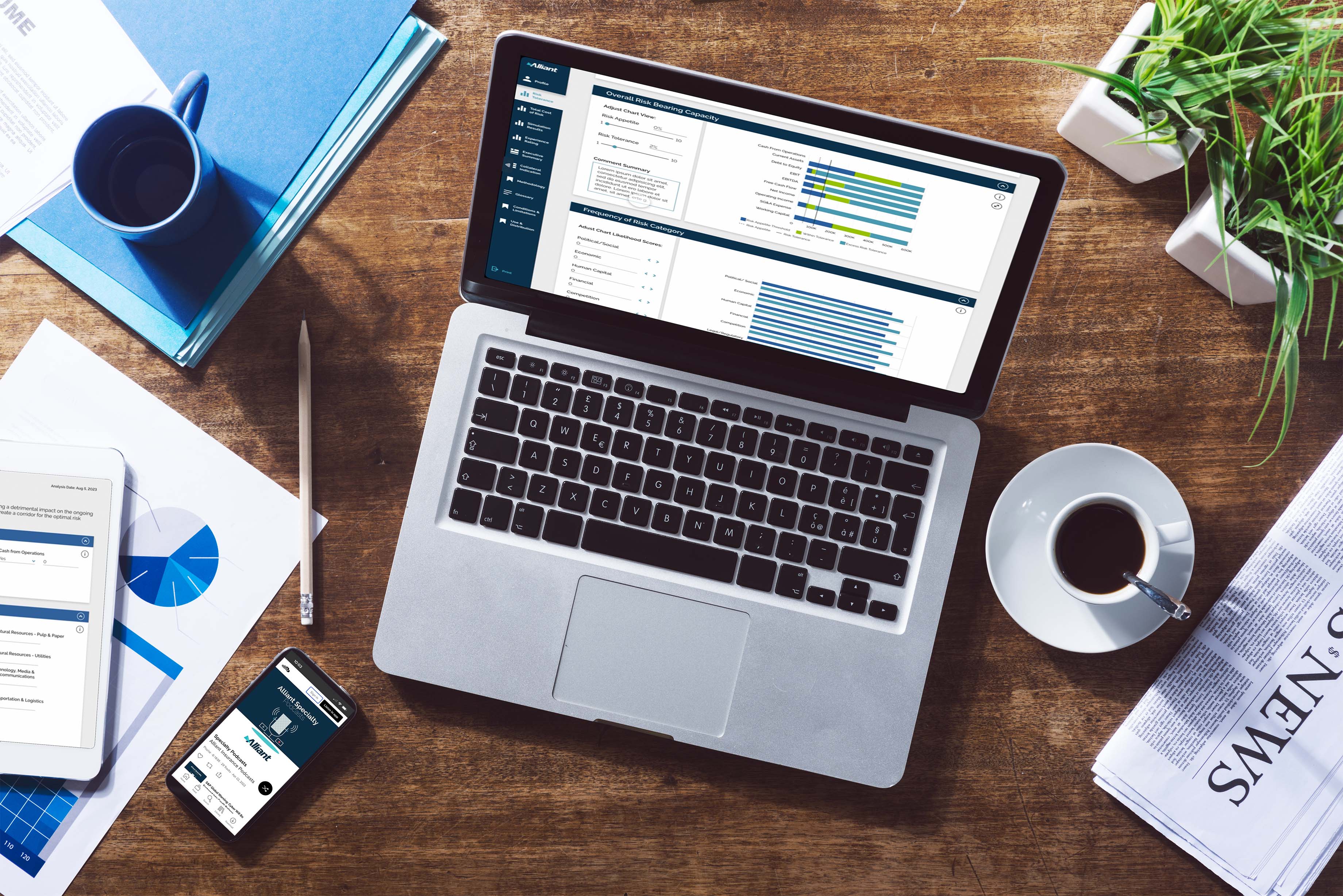In The Public Eye: NCAA Decides Athletes Can Profit from Name, Image, Likeness (NIL)
By Alliant Specialty
In a decision made earlier this year, the NCAA adopted an interim policy that allows athletes at all its member colleges and universities the ability to profit from their names, images, and likeness — or NIL. Carleen Patterson, Alliant Public Entity, sits down with Eric Seaborg, Alliant, to discuss the complicated decision and the possible risks for colleges and universities.
Intro (00:00):
Welcome to the Alliant In The Public Eye Podcast, a show dedicated to exploring risk management topics and challenges faced by today's public sector leaders. Here are your hosts, Carleen Patterson and Justin Swarbrick.
Carleen Patterson (00:19):
Welcome everyone, to today's podcast where we will discuss the NCAA's new name, image, likeness rule, or NIL. It seems like COVID continues to monopolize everyone's time and effort, and we are trying to stay on top of some of the emerging issues within higher education. The NIL ruling is a bit of a mystery because of the brief news cycle when the story first broke, and we really want to circle back and talk a little bit about it. Today, we are happy to welcome Eric Seaborg who joins us as one of our newest members of the Alliant Public Entity Specialty Group and a thought leader in higher education. Eric, welcome.
Eric Seaborg (00:55):
Thank you so much, Carleen. Glad to be here.
Carleen Patterson (00:58):
Glad to have you. Do you want to talk a little bit about your experience in history before we dive into NIL?
Eric Seaborg (01:05):
Well, just very briefly. Let me cut it into two parts. The first part of my life in the working world was in Higher Ed working on various campuses in various positions. And second part of my life was working on the other side of the table for third parties as a thought leader.
Carleen Patterson (01:23):
So, when you were working within the higher education area, you were a consultant, and you also were a risk manager, right?
Eric Seaborg (01:31):
Risk manager, consultant, I actually worked in HR, was a VP of finance and really was in just about every corner of Higher Ed, while I was on campus.
Carleen Patterson (01:43):
Well, we're certainly happy to have added your expertise to our Public Entity and Higher Education team. So, tell us a little bit about the origin of the NIL ruling.
Eric Seaborg (01:52):
Glad to, and it's really interesting because it does stem from a larger issue, which is pay for play, which is really been around for almost three decades. It's something that the advocates or the critics of the NCAA have said that they have labeled college athletes as students. And therefore, the reason they did this is to avoid them being classified as employees and therefore taking advantage of employee protection laws, such as workers' compensation for injuries and the right to unionize. So, it has been this way for about 30 years or so, roughly. In fact, in 1984, the Supreme Court really upheld that notion that athletes on campuses were really students and not employees. So that's how the issue started to come about. Now, I'll bring you forward about 30 years and bring us to where we are today. And that is the fact that pay-for-play is still an issue and going to be a big issue, the NIL ruling, or the name, image, likeness ruling is really something that I think is going to distract from that pay-for-play. And I can explain that a little bit, but basically, we are at a position right now where the NCAA has lifted, what they call their ban on name, image and likeness temporarily. And this is what we're going to talk about today, what does that mean?
Carleen Patterson (03:24):
So, before we really dive into it for our audience, is this something that if you are in a division one school you should be concerned about, or any divisions or anyone who's subject to the NCAA rulings?
Eric Seaborg (03:37):
Great question, because this really started out as a target for the division, big division one schools in the football and actually men's and women's basketball because they were bringing all the revenue from TV contracts. And so, therefore it started out being an issue surrounded by that. But realistically now, and I'll give you a couple of examples down the road, but realistically, this now applies to all sports in all colleges, big and small. And I'll give you some examples to let you know how, but it is something that all risk managers need to be thinking about, all colleges need to be thinking about.
Carleen Patterson (04:17):
All right. So, talk to me a little bit about it. You've been teasing us with some saying I'll talk about it later. So, tell me about it.
Eric Seaborg (04:26):
Well, let's jump into it. Name, image, and likeness. This is pretty much what it sounds like. And that is the fact that an athlete now can sign a promotional deal or what they call for profit to use their name, their image, or their likeness. Then a likeness is really being represented on a video game, being able to sell their autographs, promoting brands. So, that's really what it's all about and what has happened surprisingly is that right away, right out of the gate, there was a big signing by a college quarterback and before he even took a snap in college and so, that set the whole thing in motion. And originally folks, this started happening in July, and originally folks started to think that, well, it's just going to be a benefit to the big-name college players. And surprisingly, and I think in the right direction, it is not just for college division one football players There have been a number of women and women's teams who are now being looked at to be part of a branding effort. In fact, one school, a local brand had actually reached out and said that he would benefit or promote the entire athletic makeup of a particular university in the Midwest. All women at that university who play sports, only if they promote his brand through their own Instagram and TikTok. So, we've seen that we've seen the big signings. We've seen actual teams themselves being branded. And on the local level, so let's take a smaller school, in a state that doesn't get a lot of exposure. Doesn't get a lot of TV contracts. A lot of local dealerships are now saying: Hey, we'd like your whole team to be a part of this brand, and we will pay for that team to be advertising our brand through their Instagram.
And I use the word advertising kind of very loosely here, but just basically mentioning their brand, perhaps wearing it. So, it is helping with compensating, what people have argued for decades. And that's the fact that athletes actually go out and besides being students, they have a work ethic that goes well beyond what the typical student does. They have to be at practices, they have to be at games, they have to maintain GPA averages, all that, running the risk of injury and also not being compensated for it. So that's why this NIL ruling is helping to alleviate a little bit.
Carleen Patterson (06:58):
All right. So does the Nil ruling, I'm thinking about some of the examples you just said, does it also structure how the team's mascot can be used? What are they wearing? I mean, we all see it like in the NFL right now. I'm thinking about where they're wearing the jersey without the logo on it, but you all know it is and the number they're wearing. And so, does it also regulate that as well for the colleges and universities?
Eric Seaborg (07:24):
The reason why this is so tricky is because there are states just about every state now has some kind of legislation out there to pass a fair pay for play, kind of bill. And although they're not in effect yet, this is going to really turn amateur athletes, as we know them, into professionals. And that's a very tricky thing right now, because we're talking about athletes or students who may be bringing in a fair amount of money through NIL, and they still have to report it. So, it still has to be reported on taxes. Will it jeopardize your scholarship, those types of things? In answer to your question about institutions, institutions really can't play a hand in profiting off of a player, but, and as many colleges are doing right now, they can set up programs within the college to assist those players with their NIL negotiations.
So, for example, one big university has actually expanded their academic programs and have brought in entrepreneurial teachers to teach about how to market yourself, how to financially handle all this stuff. So, you got to think about this athlete's point of view. You hand me what, $80,000 to profit or to promote your brand. And I live in New York, but yet I'm going to school in Oklahoma. There are two issues that come into play, where do my taxes go? What are the laws in Oklahoma state laws on this as opposed to New York? So, this is one of the big downsides right now that is making a little market industry for accountants, CPAs, of course, lawyers. So, this has gotten to be very complicated. It’s not let's go out and earn some money, but it's also what obligations do I have financially. The school has to be very careful. And in regard to situations such as, they got to be fair, they got to be balanced. Don't benefit more from the male teams than the female teams. Will they be able to even support sports, in essence, if a lot of the good athletes around the country are going to schools where they'll get bigger notice and bigger offers? So, there's a recruitment issue in there. You can almost sit back, and it plays games with your mind as far as what are the upsides and what are the downsides to this.
Carleen Patterson (09:53):
Wow. It really sounds like it is still an emerging issue, and all of the little things that are going to be coming out of this ruling are still evolving.
Eric Seaborg (10:02):
Yes. And just kind of to give a little summation of what our risk managers and what our colleges can do is really what they, this is not going away, So the NIL ban that was in place by the NCAA has been lifted. And so that means that these colleges and risk managers are going to have to stay on top of the legislation in their state, as far as what's being passed, and what isn't. There are fortunately sports technology companies out there that do analytics. And so, they will run analytics to tell you what a certain athlete is worth. If they, for example, promote on Instagram, or if they sponsor a television. So, there's not a real risk right now of somebody being overpaid or underpaid for this. So that's good. I really think the best practices are going to be centered around being fair and consistent. So that means that risk managers should work with the athletic compliance departments because when it all comes down to it, this is still going to be an argument of going to college and doing it for the college, gathering the money and making as much as I can. So, stay tuned and we'll follow it closely, obviously.
Carleen Patterson (11:15):
Absolutely. It sounds like we need you for another chapter in about six months or so.
Eric Seaborg (11:20):
Be glad to.
Carleen Patterson (11:21):
Well, it does sound really complex, and I'm glad that you are keeping up on it and we will keep all of our risk managers, clients and prospects informed. Any other closing thoughts before we wrap up?
Eric Seaborg (11:34):
Carleen, just that we're going to stay on top of it. And of course, assisting those folks who really need some kind of guidance on, well, where do we start? Because they have to write whole new processes and programs internally on campus to manage this.
Carleen Patterson (11:49):
So, Eric, since this is such an evolving and emerging issue, if anyone has more information or would like to ask you for some additional information, how would they get ahold of you?
Eric Seaborg (11:59):
Well, obviously by email and it's very easy, it's eric.seaborg@alliant.com.
Carleen Patterson (12:12):
Many thanks to Eric for joining us today. We recognize this is a challenging time to be in public entities and higher education risk management. And we are focused on providing continued information and resources as we navigate 2021 and beyond.
Outro (12:28):
Thank you for listening. And for more information, go to www.alliant.com.
Alliant note and disclaimer: This document is designed to provide general information and guidance. Please note that prior to implementation your legal counsel should review all details or policy information. Alliant Insurance Services does not provide legal advice or legal opinions. If a legal opinion is needed, please seek the services of your own legal advisor or ask Alliant Insurance Services for a referral. This document is provided on an “as is” basis without any warranty of any kind. Alliant Insurance Services disclaims any liability for any loss or damage from reliance on this document.
Thanks for your message.
We’ll be in touch shortly
News & Resources




